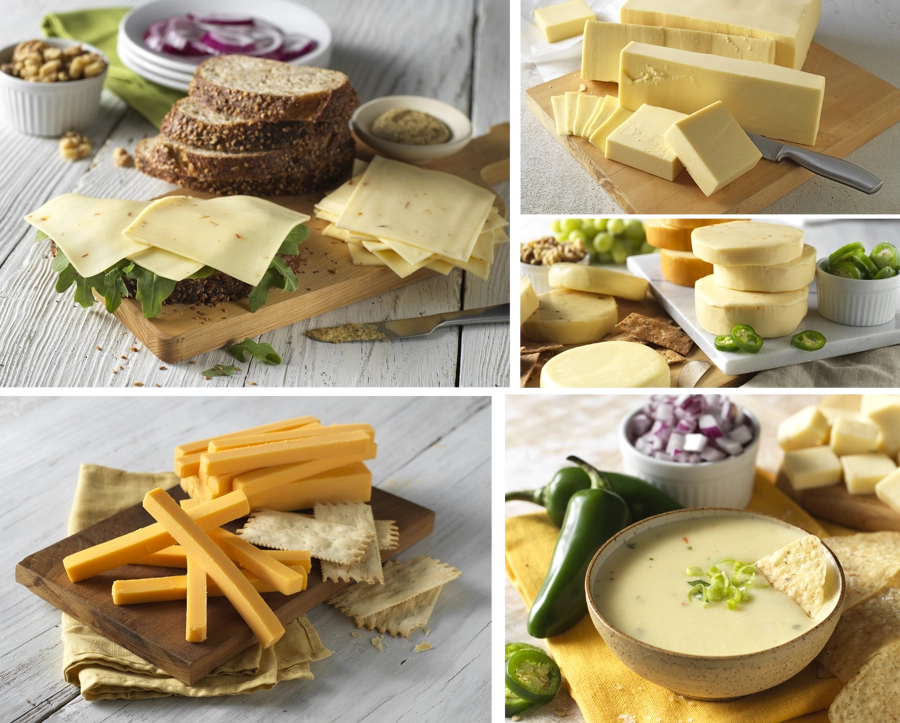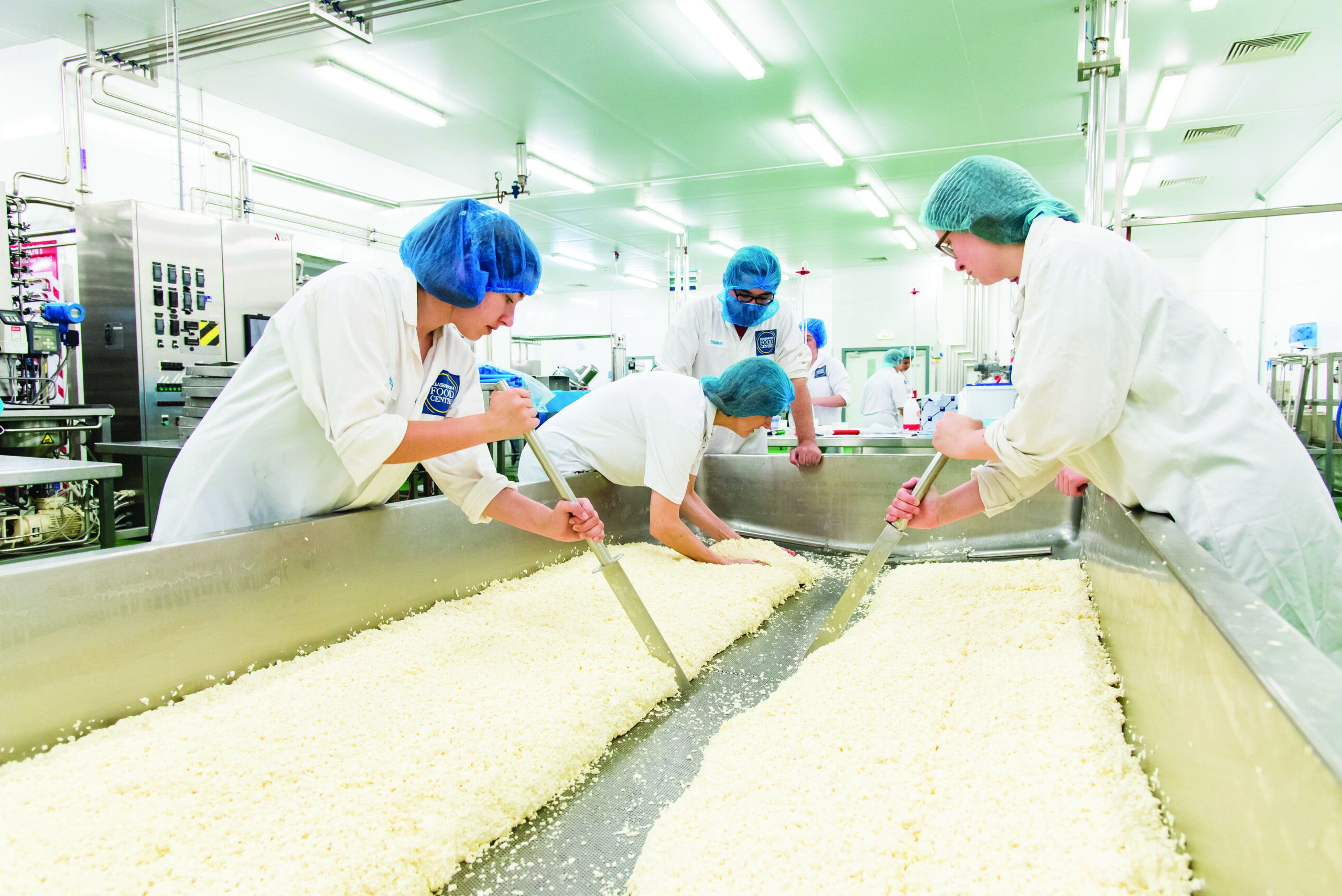Cheese Factory Melbourne: Experience the Art of Cheese
Cheese Factory Melbourne: Experience the Art of Cheese
Blog Article
Exploring the Art of Cheese Manufacturing: Techniques, Processes, and Innovations in the Dairy Industry
The exploration of cheese production incorporates a varied selection of strategies and procedures that mirror both historic traditions and contemporary technologies within the dairy market. By examining the intricate art of fermentation, aging, and modern-day production approaches, one gains understanding into just how craftsmens and massive producers alike adapt to developing consumer preferences and sustainability obstacles. As we think about the ramifications of these advancements, it ends up being crucial to question exactly how they will form the future landscape of cheese and its duty in our diet regimens and culinary techniques.
Background of Cheese Making
Tracing its origins to ancient civilizations, the background of cheese making discloses a rich tapestry of cultural and technical evolution. Proof recommends that cheese production go back over 7,000 years, with archaeological findings from areas such as Mesopotamia and the Indus Valley showcasing very early milk practices. These societies utilized milk from tamed animals, and through all-natural procedures of fermentation and curdling, they created rudimentary kinds of cheese.
As worlds proceeded, the art of cheese making ended up being a lot more refined. The ancient Egyptians and Greeks documented their approaches, that included a selection of milk sources and diverse methods for aging and flavoring cheese. The Romans even more innovative cheese production, exporting their knowledge across Europe, which caused local adaptations and unique ranges.
The Center Ages witnessed the establishment of monasteries as facilities of cheese manufacturing, where monks developed unique dishes that showed local tastes and readily available sources. Throughout the centuries, cheese production has actually progressed, influenced by elements such as location, environment, and cultural methods. This rich background not just highlights the resourcefulness of early societies however additionally lays the foundation for the diverse cheese ranges enjoyed today throughout the world.
Conventional Cheese Manufacturing Strategies
Traditional cheese production techniques include a selection of time-honored approaches that have been given via generations. These strategies, usually region-specific, show the unique cultural heritage connected with cheese-making. The process usually begins with sourcing top notch milk, which can differ in kind relying on the wanted cheese.
Coagulation is achieved via the enhancement of rennet and occasionally an acid, leading to the formation of curds. The curds are then reduced and delicately mixed, allowing whey to separate. This initial curdling stage is crucial, as it affects the appearance and dampness material of the end product.

Fermentation and Aging Processes
Fermentation and aging processes are indispensable to the development of cheese, happening after the first curdling and pressing try this out phases. During fermentation, details bacterial cultures are presented to the curds, assisting in the conversion of lactose right into lactic acid. This acidity not only assists in curd conservation however additionally adds to the taste profile and structure of the last product.
As the cheese ages, biochemical responses remain to occur, influencing its taste, aroma, and texture. Enzymes and germs damage down healthy proteins and fats, leading to the advancement of complicated flavors. The aging atmosphere, including temperature and humidity, plays a critical duty in this growth procedure. Various cheeses need varying aging periods, which can range from a few weeks to several years, resulting in unique features.
Additionally, the presence of mold and mildews or yeasts on celebrity surface can even more enhance taste intricacy. As an example, blue cheeses depend on particular mold and mildew societies to produce their trademark taste profiles. In general, both fermentation and aging are crucial in specifying the individuality of cheeses, enabling artisans to develop a diverse array of products that satisfy a large range of palates.
Modern Innovations in Dairy Manufacturing
Innovations in dairy products production have changed the cheese-making procedure, boosting efficiency and item quality. Technological improvements, such as automated milking systems and precision fermentation strategies, have streamlined procedures and enhanced uniformity in raw milk top quality. These systems decrease labor prices and improve pet well-being by allowing for more comfortable and reliable bleeding techniques.
In addition, the unification of information analytics and IoT (Internet of Points) devices has made it possible for dairy manufacturers to monitor different parameters, such as temperature and humidity, in real-time. cheese for sale online. This capability ensures ideal problems throughout the cheese-making process, leading to a higher high quality final result
In addition, developments in pasteurization techniques, consisting of high-temperature short-time (HTST) pasteurization, have not just increased food safety however likewise maintained the fragile tastes and nutrients fundamental in milk.
Sustainable methods are additionally obtaining grip, with advancements in waste management and sustainable power utilization. Lots of manufacturers are currently utilizing biogas from milk waste, promoting environmental stewardship while simultaneously lowering operational prices.
These modern technologies collectively add to a much more efficient, lasting, and top quality cheese manufacturing process, setting new standards in the dairy industry.
Future Fads in Cheese Sector
As celebrity sector remains look at this site to evolve, emerging trends are reshaping production, usage, and advertising and marketing techniques. One considerable trend is the expanding demand for artisanal and specialized cheeses, driven by consumers seeking one-of-a-kind flavors and top notch ingredients. This shift is urging producers to adopt traditional techniques while including modern innovation for boosted quality assurance.
Sustainability continues to be at the center of customer choices, triggering manufacturers to check out environmentally friendly methods, such as decreasing water usage, optimizing energy intake, and utilizing biodegradable packaging materials. In addition, innovations in plant-based cheese alternatives are expanding market possibilities, providing to the increasing number of vegan and lactose-intolerant consumers.
Moreover, digital advertising and shopping are transforming how cheese is marketed and sold, enabling producers to link straight with customers and tailor their offerings to particular demographics. Membership solutions and on the internet platforms are becoming popular networks for cheese circulation, enhancing availability and comfort.
Lastly, health-conscious trends are affecting cheese formulations, with manufacturers establishing lower-fat, lower-sodium, and nutrient-enriched options to fulfill consumer demands. As these patterns proceed to unravel, celebrity industry is likely to witness a dynamic improvement that straightens with modern consumer values and preferences.

Final Thought
The exploration of cheese production discloses a complex interplay of time-honored techniques and contemporary developments. As the dairy products sector welcomes health-conscious patterns and environment-friendly methods, the future of cheese manufacturing assures continued growth and innovation, ensuring its long-lasting value try these out in culinary culture.
Report this page